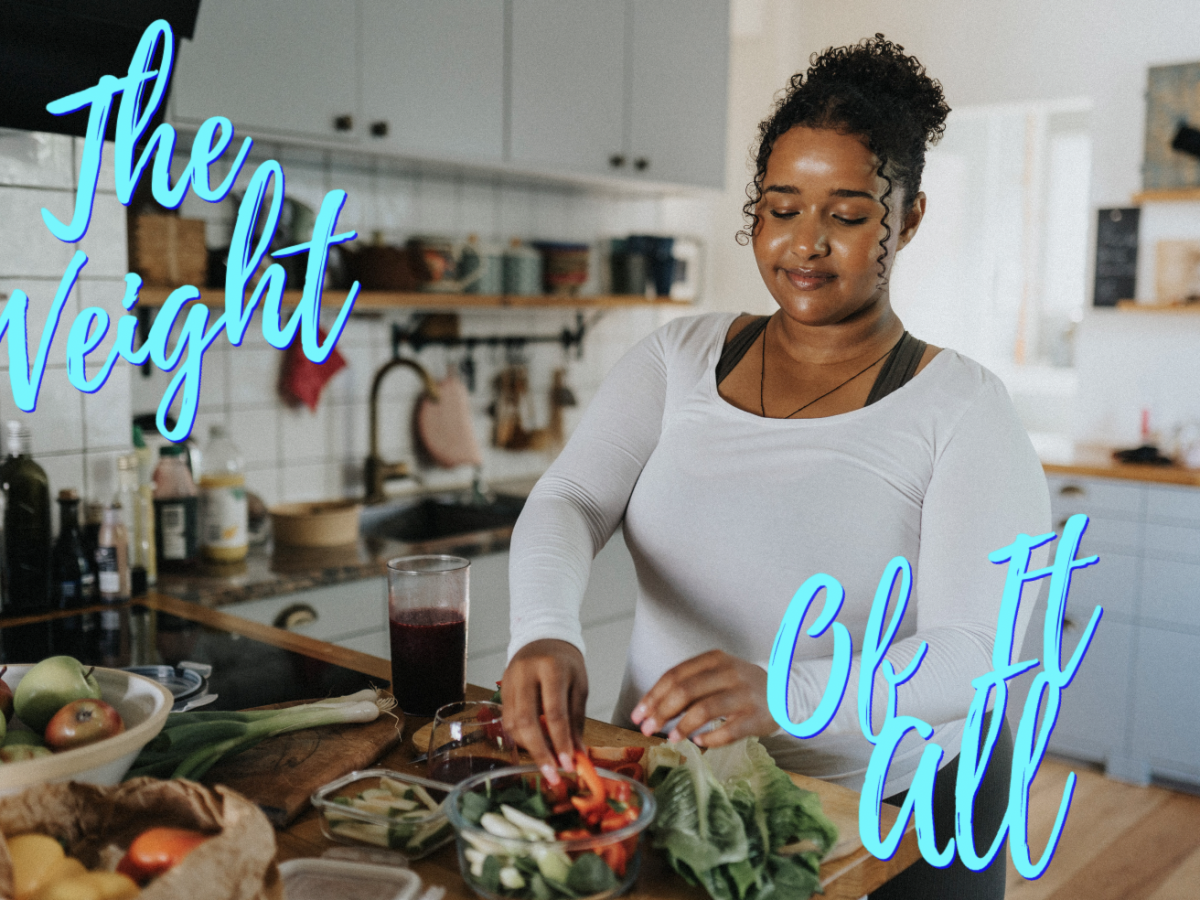
When a new year comes around, you’ll find that many people want to uplevel their health, mainly their fitness routine and diet. However, many don’t know where to start when curating a healthy diet. Unfortunately, studies show that Black women demonstrate health disparities compared to other ethnic groups, like obesity and lack of a balanced diet. Compared with other ethnic groups, Black Americans have been shown to have higher intakes of cholesterol, total and saturated fat, and sodium and lower intakes of fiber, fruits, vegetables, and whole grains.
Many of Maya Feller’s (registered dietician and nutritionist) patients have struggled with tangible ways of finding balance in their nutrition. They swing from total restriction to feeling out of control. She believes cravings are natural, so finding productive ways not to fear them can help. It’s possible to have what you are craving and then move on. We’ve spoken to several other Black women nutritionists and dietitians about how to handle cravings that may be unhealthy and balance a healthier diet for the new year and beyond.
Dr. Kera Nyemb-Diop, The Black Nutritionist, on tackling cravings:
When it comes to handling cravings that may be unhealthy, it’s essential to shift away from the All or Nothing mentality and adopt a more mindful approach to food. Consider cravings as your body’s way of communicating with you, signaling potential needs that may require attention.
Physical Causes: Cravings can stem from various physical and mental factors. Physical causes include imbalances in hunger hormones like leptin and ghrelin, pregnancy, premenstrual syndrome (PMS), lack of sleep, nutrient-poor diet, poor hydration, gut flora, physical activity, and the frequency at which you consume craved foods.
Mental Causes: Stress, mood, and eating context significantly trigger cravings. Your brain often associates a specific food with a particular context, leading to cravings in similar situations. Building a healthy relationship with food involves recognizing its multifaceted role – it’s not just about fuel, macronutrients, and energy but also emotional connection, pleasure, and satisfaction.
To improve your relationship with food, strive for emotional equality in your food choices. Avoid attaching shame or judgment to what you eat, whether donuts or broccoli. Remember, your food choices do not determine your worth.
Moreover, granting yourself unconditional permission to eat is crucial. Deprivation can intensify cravings, leading to overeating. Addressing basic needs such as sufficient sleep, hydration, and consistent eating patterns can significantly reduce the intensity of cravings. In many cases, cravings are your body’s way of signaling unmet needs, so paying attention to these fundamentals is paramount.
Consider asking yourself: Have you slept enough (7 to 8 hours)? Are you drinking enough water? Are you eating consistently? Focusing on these basics can be a powerful first step in managing cravings effectively.
When treating oneself while maintaining a balanced diet, it’s crucial to recognize that pleasure and healthful eating can coexist. People are more likely to make better food choices when they enjoy them.
Timing plays a role in optimizing your meals for both pleasure and health. One effective strategy is to consider the timing of your treats, especially after a meal. This enhances the sensory experience and helps stabilize blood sugar levels. The principle here is to pair carbohydrates with protein, fat, and fiber to slow the absorption of carbs into the bloodstream, resulting in lower post-meal blood sugar.
The order in which you consume your foods can also impact your overall satisfaction and health. Starting with vegetables, followed by proteins and fats, and saving starches and sugars for last can contribute to a balanced and satisfying meal.
It’s essential to note that while timing is a factor, its importance should be kept in perspective. In the context of weight management, the overall daily calorie and macronutrient intake holds more significance than the frequency of meals. No matter how well you time your meals, achieving a calorie deficit remains fundamental when aiming for fat loss.
Remember, finding a balance that works for you, both in terms of enjoyment and nutritional value, is critical to sustaining a healthy and pleasurable approach to eating.
Defining a healthy diet involves maintaining a well-balanced intake of various food components. Essential elements include whole grains, fruits, vegetables, protein sources, dairy, nuts, and beans. However, it goes beyond merely what we eat; having a healthy relationship with food is equally crucial.
Balance: A healthy diet is characterized by a thoughtful combination of whole grains, fruits, vegetables, protein-rich foods, dairy, nuts, and beans. Striving for variety ensures a diverse range of nutrients contributing to overall well-being.
Mindful eating: It’s imperative not to overlook our relationship with food. Engaging in disordered behaviors like obsessive calorie counting, strict meal timing, or extreme detoxes can be normalized in the wellness space. Instead, viewing food beyond its nutritional components—acknowledging its impact on physical health, mental well-being, emotions, and socio-cultural aspects—is essential.
Use nutrition information as a tool: Understanding nutrition information is valuable, not a weapon. It empowers individuals to make informed choices without rigid rules. Such rules can intensify cravings and lead to negative relationships with food.
Rejecting perfection: Society sometimes idealizes those who meticulously track calories, nutrients, and macros, but it’s crucial to recognize that perfection in eating is unattainable and can contribute to heightened anxiety about food selection.
Managing eating without rigidity: We can all manage our eating without overly strict rules. The focus should be on a balanced, flexible approach that aligns with individual preferences and needs.
Awareness of anxiety: Individuals overly obsessed with nutrition may experience heightened anxiety about food selection and develop negative relationships with eating. Acknowledging and addressing this anxiety is a crucial step toward a healthier approach to nutrition.
In summary, a healthy diet is not just about the foods we consume but also about fostering a positive and mindful relationship with what we eat.
Aja Gyimah on food selection:
All foods are fine in moderation, including foods that are higher in sugar/more processed/higher in fat. It’s important to honor your cravings and develop strategies to avoid replacing healthier foods with less healthy options. I encourage my clients to make sure they eat balanced meals with plenty of vegetables every day. As long as they successfully meet this criterion, the diet has room left to eat these foods (if they still have room in their stomachs). By focusing on adding healthier foods into their diets during meals, it’s easier to say no to cravings.
When should you treat yourself while trying to balance a healthier diet?
I work with my clients to consistently stick to their goals Monday-Friday, and then the weekends are left to indulge. Knowing they are meeting their goals during the week helps to take the pressure off during the weekends when craving something sweet.
What constitutes a healthy diet?
Daily meals consist of plenty of vegetables and a significant portion of protein. Half of your plate should include veggies, while a quarter of the plate should have a source of protein. You are leaving the remaining quarter for complex carbs. Outside of this, there’s some room left for high-protein snacks, plenty of fruit, and some fun stuff like ice cream, candy, and fried foods.







